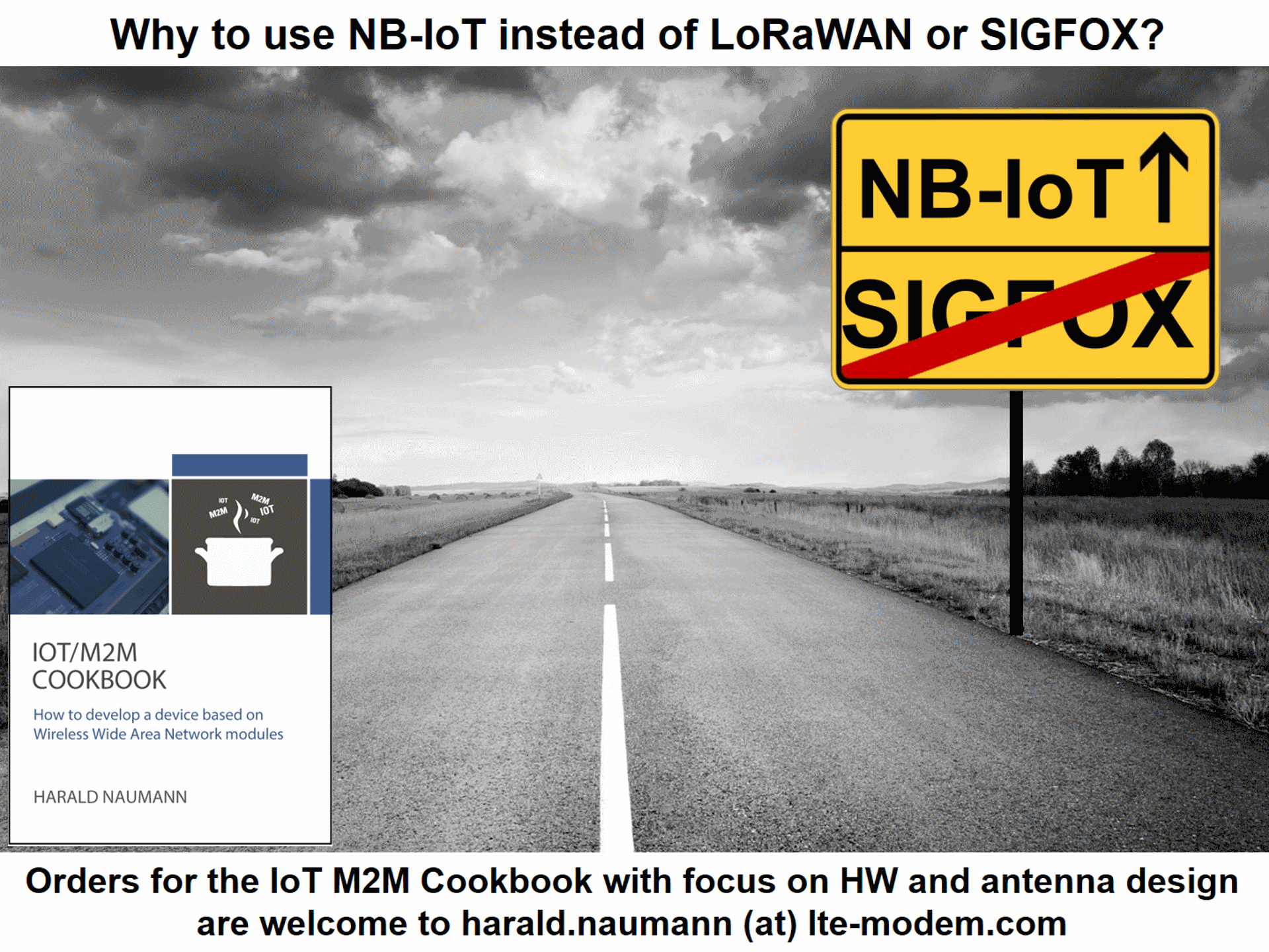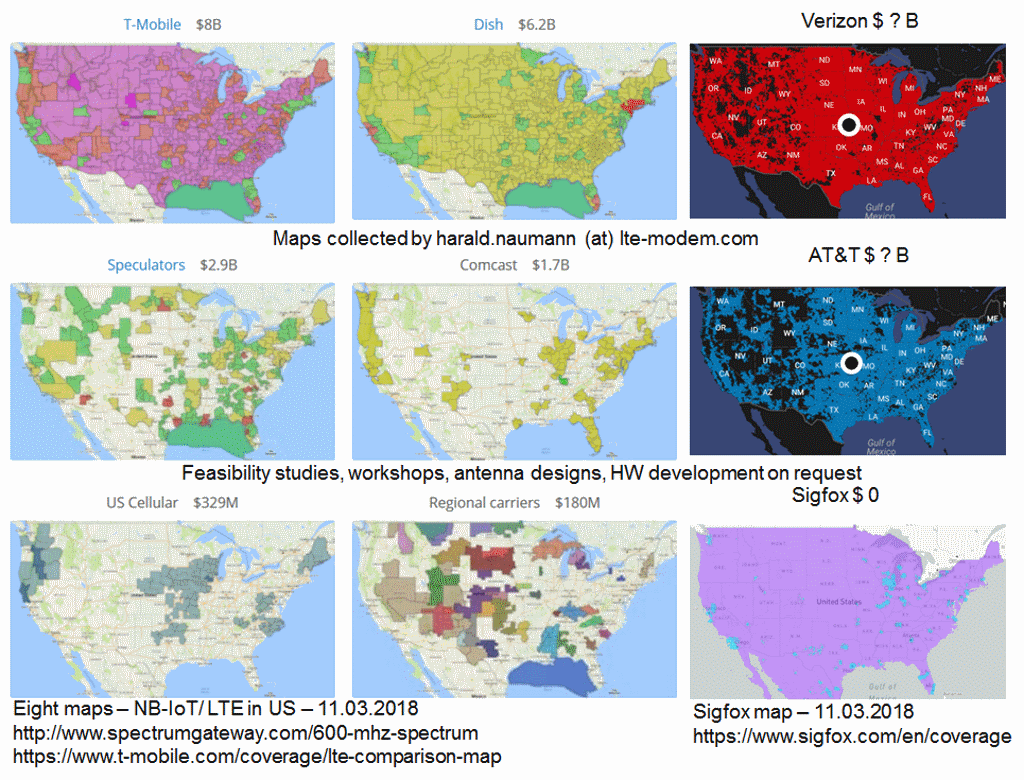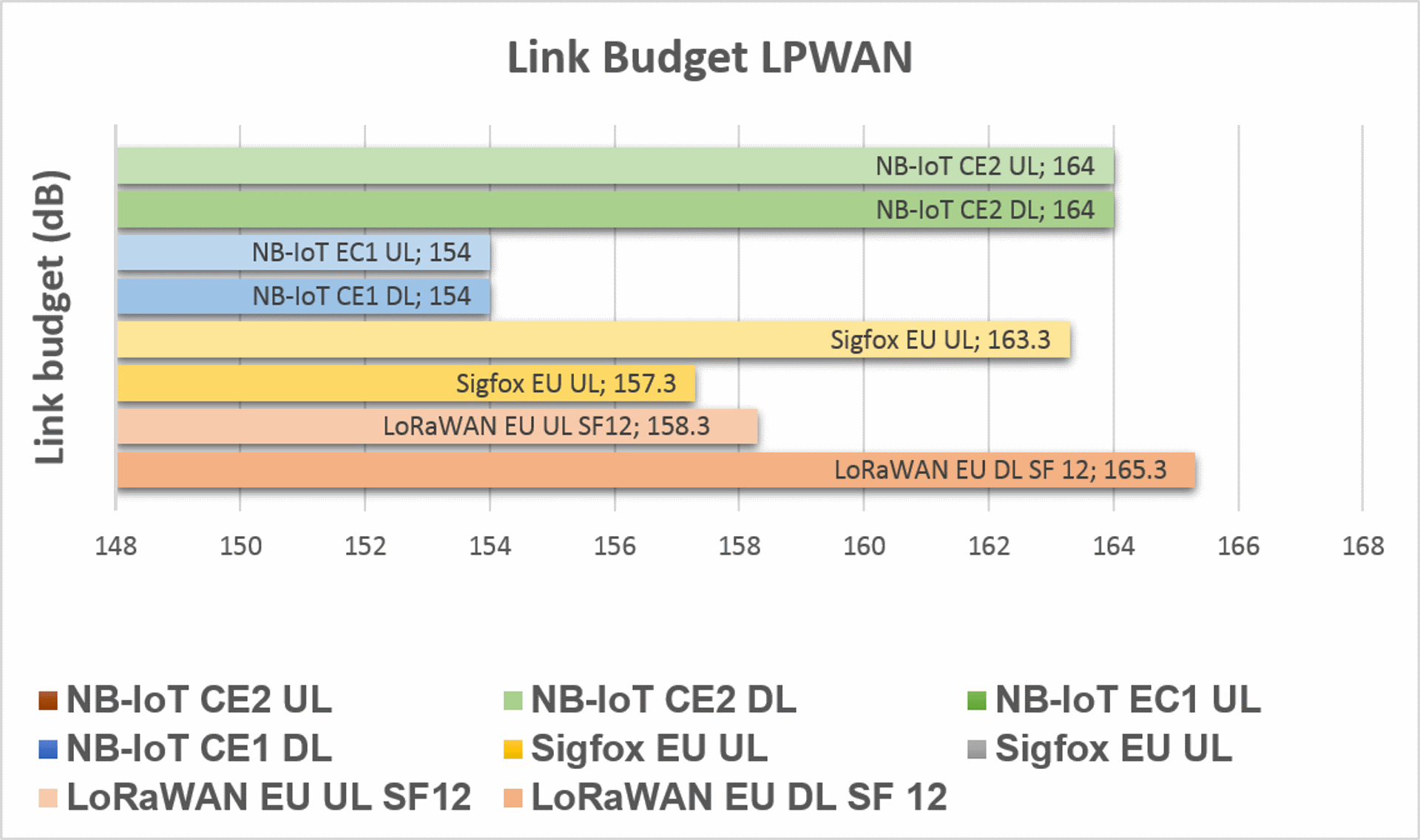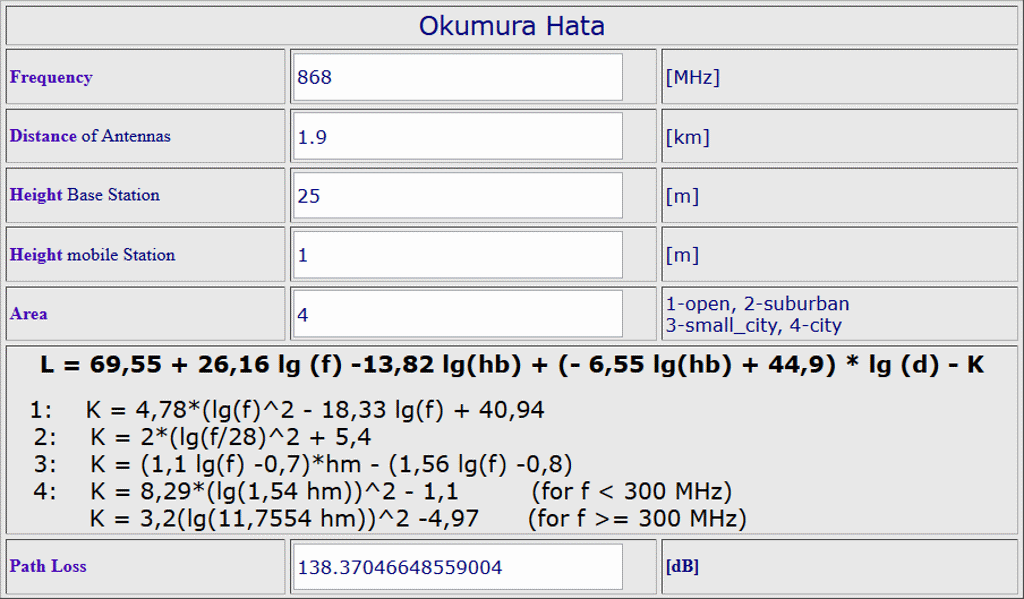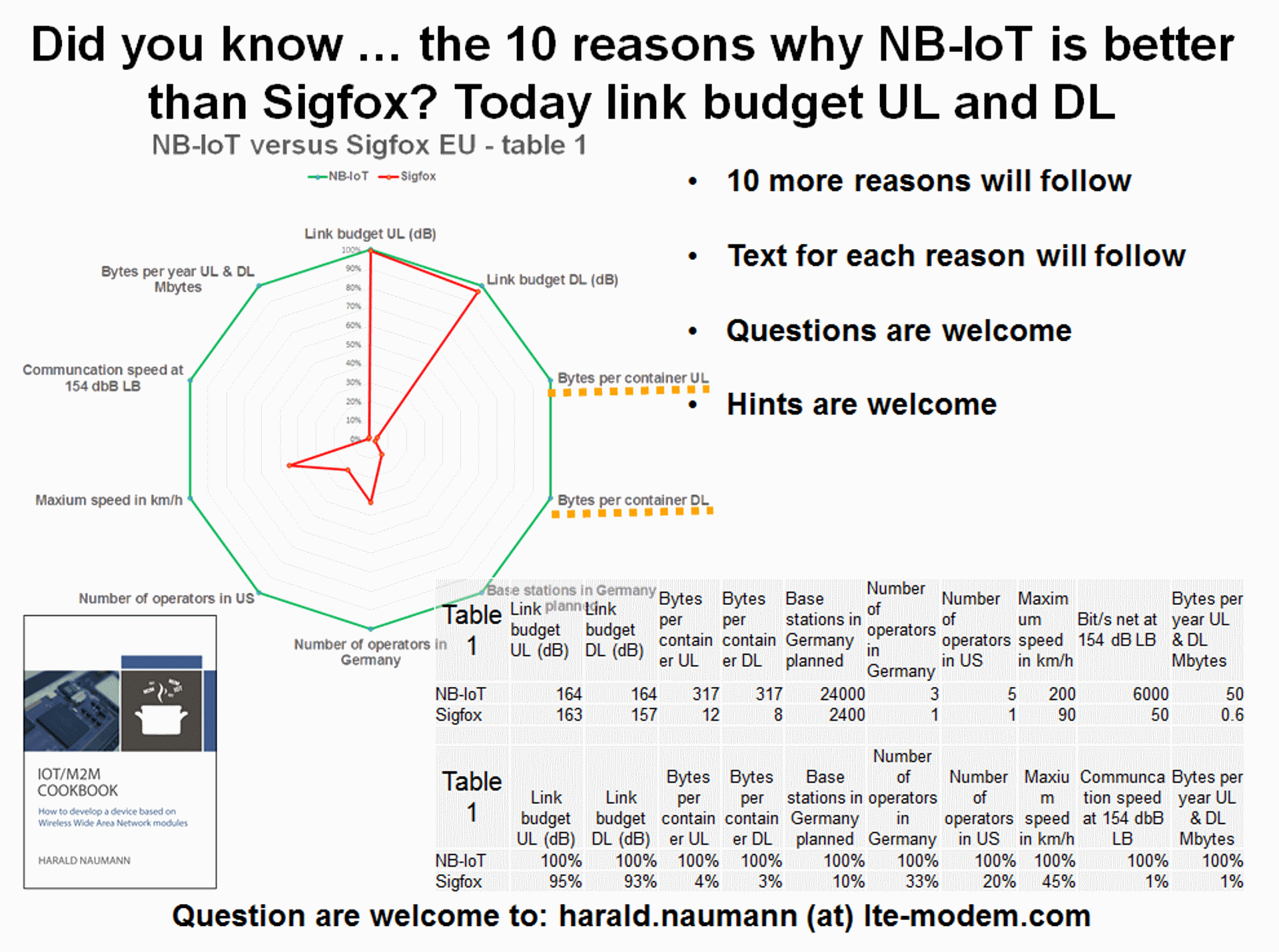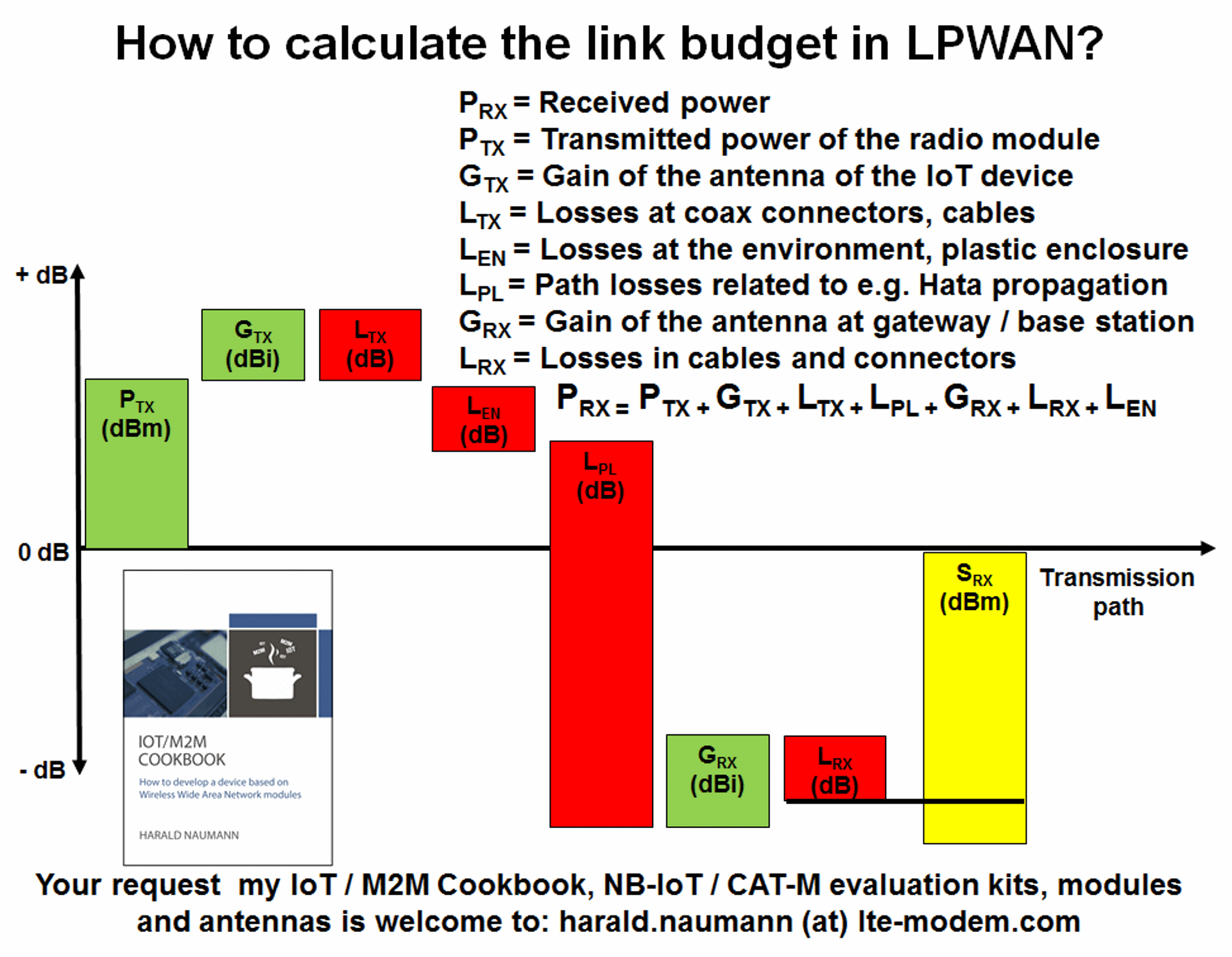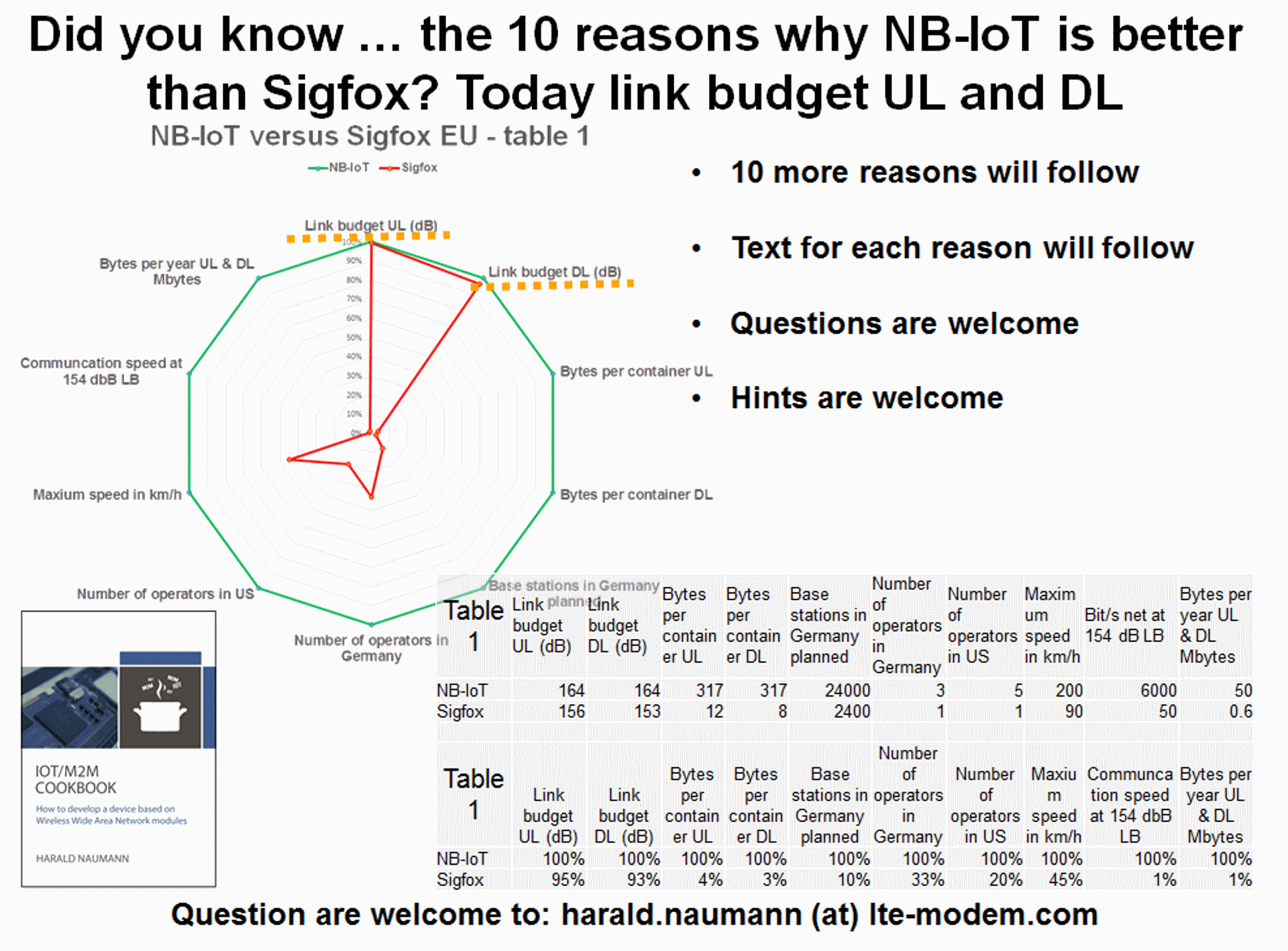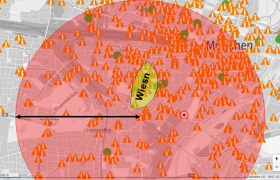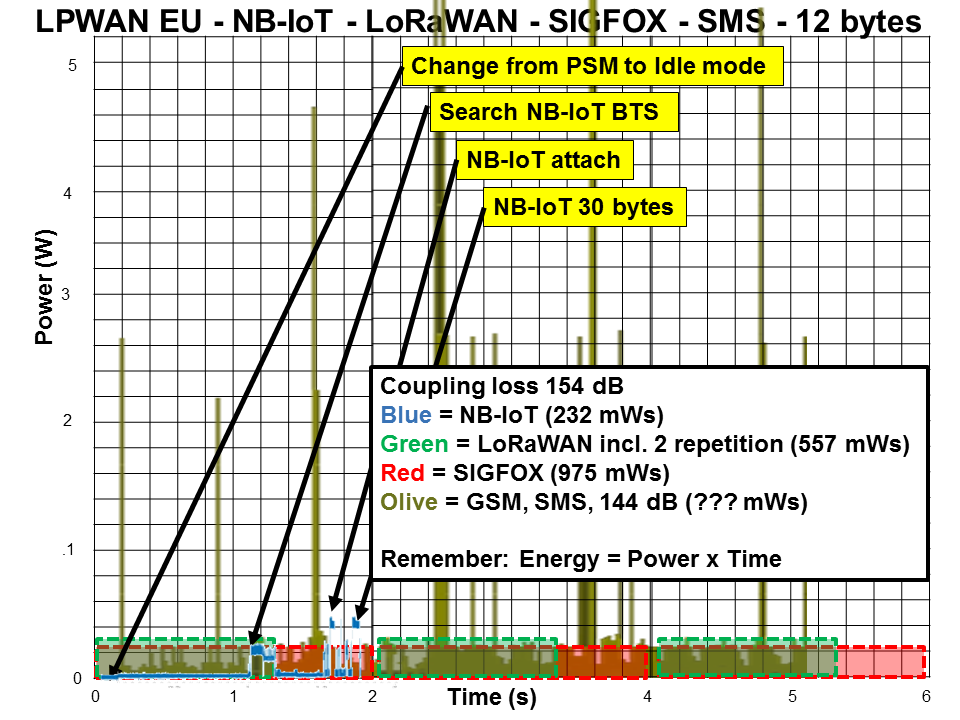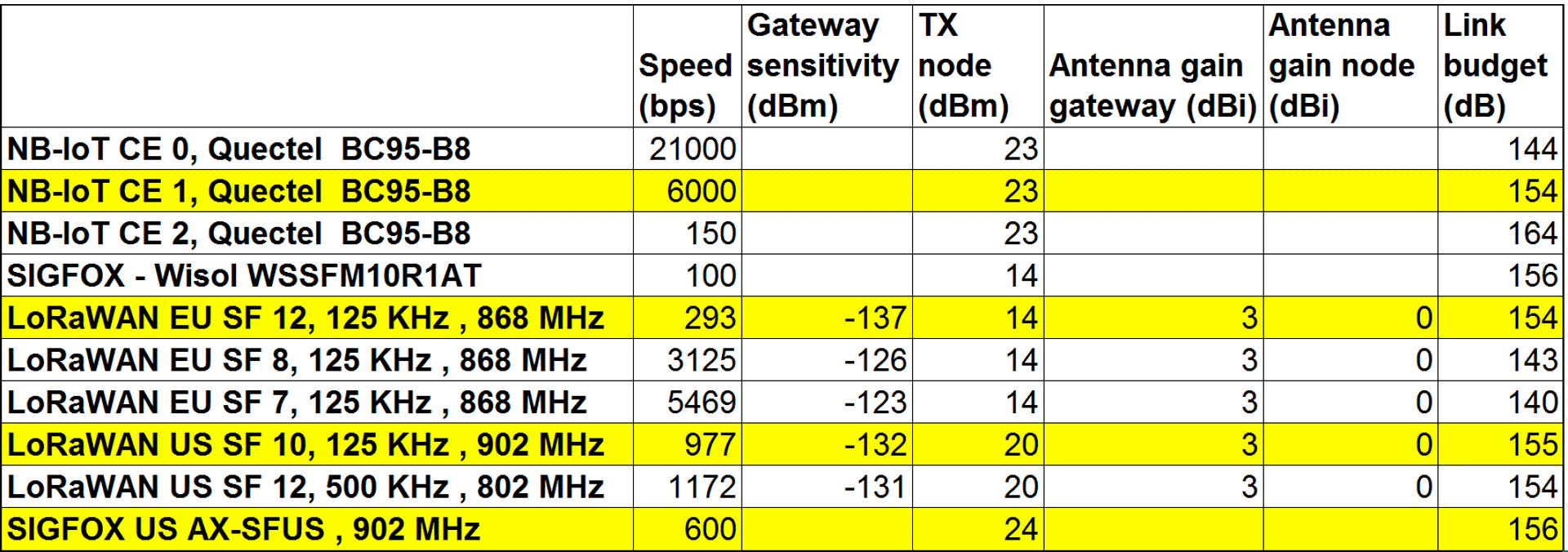Why now NB-IoT instead of LoRaWAN or Sigfox? There are hundreds of reasons for NB-IoT and hundreds against LoRaWAN and Sigfox. Below is a typical example. The potential customer already prefers NB-IoT and we can deliver NB-IoT with fallback to GSM. In Germany there is no Sigfox Indoor in my city. In the three neighbouring […]
Tag: SIGFOX
NB-IoT and Sigfox comparison – number of operators in Germany and the States
In order to minimize the risk, the developers of IoT devices try to avoid single source components and services. For microcontrollers and radio modules it becomes difficult, but mostly similar components from different manufacturers are used. The LPWAN technology has to be chosen sooner or later. NB-IoT and LTE-M are offered by different network operators […]
LPWAN range comparision – NB-IoT, LoRaWAN, Sigfox
NB-IoT and Sigfox comparison – number of base stations / gateways
In order to understand why more base stations automatically represent a better network, some explanations are necessary. Sigfox has planned 2400 gateways for Germany. These 2400 gateways are confronted with 24,000 LTE base stations from Vodafone and approximately the same amount from Deutsche Telekom. These 48,000 LTE base stations do not all need to be […]
NB-IoT and Sigfox comparison – upload and download capacity
The message container at LPWAN limits the application in the number of possible bytes per transfer. In addition to the physical container, there is always a logical limit. In the European unlicensed band we have one percent duty cycle in the upload. Therefore, only 36 seconds per hour are available for the protocol header and […]
How to calculate the link budget in LPWAN
The link budget is the total of all losses and gains from the transmission of a radio wave. A wave is amplified or attenuated by the antenna. During the transmission of a signal between transmitter and receiver, data can be lost. The study of losses and gains is therefore important to calculate the reliability and […]
NB-IoT and Sigfox comparison – Link budget UL and DL
The link budget (LB) describes the delta of the transmitted and received power at the receiver. If the Maximum Coupling Loss (MCL) is exceeded, reception is no longer possible. For NB-IoT this is 164 dB. At 164 dB LB, the number of frame repetitions is already high. 164 dB can only be achieved in stand-alone […]
The new benchmark in LPWA indoor penetration is underground
Light indoor penetration and deep indoor penetration with LPWAN is yesterday’s news. The new record for the penetration through walls and floors was achieved in Munich on August 10, 2018 with NB-IoT. Due to the great heat in the office, our Munich team continued the NB-IoT tests in the Munich subway tunnels. With NB-IoT you […]
Comparison of TX energy consumption across LPWAN in EU 12 bytes on NB-IoT, LoRaWAN, SIGFOX and GSM/SMS)
After comparing NB-IoT, LoRaWAN and SIGFOX’s energy consumptions during transmission in the USA and Europe, here is another direct comparison with GSM and SMS. SIGFOX and LoRaWAN repeatedly call out their low energy consumption when compared to SMS with wake-up and registration on the GSM network. Their commentary is that the two unlicensed LPWAN technologies […]
